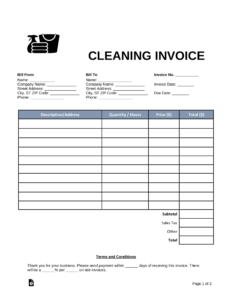Training and development are essential components of a successful organization. By investing in the skills and knowledge of employees, companies can enhance productivity, improve employee satisfaction, and achieve their business goals. However, designing an effective employee training plan can be a daunting task. This article provides a comprehensive guide to creating an employee training plan template that will help organizations streamline their training initiatives and maximize the potential of their workforce.
1. Introduction
Before diving into the details of creating an employee training plan template, it is important to understand the significance of training and development in the workplace. Training is a systematic process that aims to improve employee performance, enhance skills, and increase knowledge. An effective training plan ensures that employees acquire the necessary competencies to carry out their job responsibilities efficiently and effectively.
2. Benefits of Employee Training
Implementing a well-designed employee training plan can bring numerous benefits to both the organization and its employees. Some of the key advantages include:
- Increased productivity: Training equips employees with the knowledge and skills needed to perform their tasks more efficiently, leading to improved productivity levels.
- Enhanced employee satisfaction: Training programs show employees that their organization is invested in their growth and development, leading to higher job satisfaction and increased employee retention.
- Better customer service: Well-trained employees are better equipped to handle customer inquiries, resolve issues, and provide excellent service, leading to higher customer satisfaction.
- Reduced employee turnover: By providing opportunities for growth and development, organizations can reduce employee turnover and the associated costs of recruiting and training new employees.
- Improved employee morale: Investing in training and development creates a positive work environment, boosting employee morale and motivation.
3. Assessing Training Needs
Before creating a training plan, it is crucial to assess the training needs of employees. This helps identify knowledge gaps, skill deficiencies, and areas for improvement. Some common methods for assessing training needs include:
- Employee surveys: Conducting surveys to gather feedback from employees about their training needs and preferences.
- Performance evaluations: Reviewing employee performance evaluations to identify areas where additional training may be required.
- Skills assessments: Administering skills assessments or tests to determine the existing skill levels of employees.
- Observation: Observing employees in their work environment to identify areas where training can enhance their performance.
4. Setting Training Objectives
Once the training needs have been identified, it is essential to establish clear and measurable training objectives. Training objectives define what employees should be able to accomplish after completing the training program. Some examples of training objectives include:
- Improve product knowledge and understanding
- Enhance communication and interpersonal skills
- Develop leadership and management abilities
- Acquire technical skills for specific job roles
The training objectives should be aligned with the overall goals and objectives of the organization to ensure that the training program contributes to the company’s success.
5. Selecting Training Methods
Choosing the right training methods is crucial to ensure effective learning and knowledge transfer. Different training methods suit different learning styles and objectives. Some common training methods include:
- Classroom training: Traditional instructor-led training sessions in a classroom setting.
- E-learning: Online training courses and modules that employees can access remotely.
- On-the-job training: Learning by performing tasks and receiving guidance from experienced colleagues or supervisors.
- Mentoring and coaching: Pairing employees with experienced mentors or coaches who provide guidance and support.
- Workshops and seminars: Interactive sessions that allow employees to learn from subject matter experts and industry leaders.
It is important to select training methods that are both engaging and effective in meeting the training objectives identified earlier.
6. Designing Training Materials
Training materials play a vital role in facilitating learning and knowledge retention. Well-designed training materials should be clear, concise, and visually appealing. They should include relevant examples, case studies, and statistics to support the learning objectives. The use of multimedia elements, such as videos and graphics, can also enhance the learning experience. Additionally, training materials should be tailored to the specific needs of the target audience to ensure maximum effectiveness.
7. Developing a Training Schedule
Creating a training schedule is essential to ensure that the training program is executed efficiently and does not disrupt daily operations. The schedule should outline the duration of each training session, the training methods used, and the target audience for each session. It is also important to consider the availability of employees and any time constraints that may impact the training schedule. A well-structured training schedule helps employees plan their time effectively and ensures that the training program is completed within the desired timeframe.
8. Implementing the Training Plan
Once the training plan has been developed, it is time to implement it. This involves communicating the training schedule to employees, providing access to training materials, and delivering the training sessions. It is important to create a supportive and inclusive learning environment that encourages active participation and engagement. Regular feedback and assessment should be incorporated to track the progress of employees and identify areas for improvement.
9. Evaluating Training Effectiveness
Evaluating the effectiveness of the training program is crucial to determine its impact on employee performance and the organization as a whole. Various methods can be employed to evaluate training effectiveness, including:
- Pre and post-training assessments: Administering assessments before and after the training program to measure the improvement in knowledge and skills.
- Feedback surveys: Gathering feedback from employees to gauge their satisfaction with the training program and identify areas for improvement.
- Observation and performance monitoring: Assessing employees’ performance in the workplace to determine if the training has translated into improved job performance.
- Business impact analysis: Analyzing the impact of the training program on key business metrics, such as productivity, customer satisfaction, and employee turnover.
Based on the evaluation results, necessary adjustments can be made to the training plan to further enhance its effectiveness.
10. Conclusion
An effective employee training plan is a valuable tool for organizations looking to develop their workforce and achieve their business objectives. By assessing training needs, setting clear objectives, selecting appropriate training methods, and evaluating the effectiveness of the training program, companies can maximize the potential of their employees and gain a competitive edge in the marketplace.
FAQs
1. How often should employee training be conducted?
Employee training should be conducted regularly to ensure that employees are equipped with the latest knowledge and skills. The frequency of training sessions may vary depending on the nature of the industry, the complexity of the job roles, and the pace of technological advancements. However, it is recommended to review and update the training plan annually to address changing needs and priorities.
2. How can organizations measure the return on investment (ROI) of employee training?
Measuring the ROI of employee training involves assessing the impact of the training program on key business metrics. This can include evaluating improvements in productivity, customer satisfaction, employee retention, and cost savings. By comparing these metrics before and after the training program, organizations can determine the ROI and assess the effectiveness of the training initiative.
3. What are some cost-effective training methods for small businesses?
Small businesses with limited resources can opt for cost-effective training methods such as online learning platforms, webinars, and self-paced e-learning modules. These methods eliminate the need for expensive travel and accommodation costs associated with traditional classroom training. Additionally, leveraging internal resources and expertise through mentoring and coaching programs can provide valuable training opportunities at a lower cost.
4. How can organizations ensure that training programs are engaging for employees?
To ensure training programs are engaging for employees, organizations can incorporate interactive elements such as group activities, discussions, and hands-on exercises. Utilizing multimedia elements, such as videos and gamification, can also enhance engagement. Involving employees in the training design process and incorporating real-life examples and case studies relevant to their work can make the training more relatable and engaging.
5. How can organizations measure the effectiveness of their training programs?
Organizations can measure the effectiveness of their training programs through various methods, including pre and post-training assessments, feedback surveys, observation of employee performance, and analysis of business impact. These evaluation methods provide insights into the knowledge and skills gained by employees, their satisfaction with the training program, and the impact of the training on key business outcomes.
Summary
An effective employee training plan is crucial for organizations to enhance productivity, improve employee satisfaction, and achieve their business objectives. By assessing training needs,setting clear objectives, selecting appropriate training methods, designing training materials, developing a training schedule, implementing the plan, evaluating training effectiveness, and making necessary adjustments, companies can create a comprehensive and impactful training program. Regular training sessions help employees stay updated with the latest knowledge and skills, leading to increased productivity and customer satisfaction. Moreover, investing in employee training promotes a positive work environment, boosts employee morale, and reduces turnover rates.
Assessing the training needs of employees is the first step in creating an effective training plan. This can be done through employee surveys, performance evaluations, skills assessments, and observation. By identifying knowledge gaps and skill deficiencies, organizations can tailor the training program to address specific needs and ensure maximum impact.
Setting clear training objectives is essential to provide direction and focus to the training program. Objectives should be specific, measurable, achievable, relevant, and time-bound (SMART). For example, if the objective is to improve product knowledge, the training program can include modules on product features, benefits, and customer use cases.
Selecting the right training methods is crucial to cater to different learning styles and maximize engagement. Classroom training, e-learning, on-the-job training, mentoring, and workshops are some common methods. A combination of methods may be used to provide a well-rounded learning experience.
Designing effective training materials is vital to facilitate learning and knowledge retention. Training materials should be visually appealing, concise, and include relevant examples, case studies, and statistics. Multimedia elements, such as videos and graphics, can enhance the learning experience and make the content more engaging.
Developing a training schedule ensures that the training program is executed efficiently and does not disrupt daily operations. The schedule should outline the duration of each training session, the training methods used, and the target audience for each session. Consideration should be given to employee availability and any time constraints.
Implementing the training plan involves communicating the training schedule to employees, providing access to training materials, and delivering the training sessions. It is important to create a supportive and inclusive learning environment that encourages active participation and engagement. Regular feedback and assessment should be incorporated to track the progress of employees and identify areas for improvement.
Evaluating the effectiveness of the training program is crucial to determine its impact on employee performance and the organization as a whole. Pre and post-training assessments, feedback surveys, observation, and business impact analysis are some methods that can be used. Based on the evaluation results, necessary adjustments can be made to the training plan to further enhance its effectiveness.
In conclusion, an employee training plan template is a valuable tool for organizations looking to develop their workforce and achieve their business objectives. By assessing training needs, setting clear objectives, selecting appropriate training methods, designing effective training materials, developing a training schedule, implementing the plan, evaluating training effectiveness, and making necessary adjustments, companies can maximize the potential of their employees and gain a competitive edge in the marketplace. Investing in employee training not only enhances productivity and customer satisfaction but also promotes a positive work environment, boosts employee morale, and reduces turnover rates. By continuously investing in the growth and development of employees, organizations can create a skilled and motivated workforce that drives success.
FAQs
1. How often should employee training be conducted?
Employee training should be conducted regularly to ensure that employees are equipped with the latest knowledge and skills. The frequency of training sessions may vary depending on the nature of the industry, the complexity of the job roles, and the pace of technological advancements. However, it is recommended to review and update the training plan annually to address changing needs and priorities.
2. How can organizations measure the return on investment (ROI) of employee training?
Measuring the ROI of employee training involves assessing the impact of the training program on key business metrics. This can include evaluating improvements in productivity, customer satisfaction, employee retention, and cost savings. By comparing these metrics before and after the training program, organizations can determine the ROI and assess the effectiveness of the training initiative.
3. What are some cost-effective training methods for small businesses?
Small businesses with limited resources can opt for cost-effective training methods such as online learning platforms, webinars, and self-paced e-learning modules. These methods eliminate the need for expensive travel and accommodation costs associated with traditional classroom training. Additionally, leveraging internal resources and expertise through mentoring and coaching programs can provide valuable training opportunities at a lower cost.
4. How can organizations ensure that training programs are engaging for employees?
To ensure training programs are engaging for employees, organizations can incorporate interactive elements such as group activities, discussions, and hands-on exercises. Utilizing multimedia elements, such as videos and gamification, can also enhance engagement. Involving employees in the training design process and incorporating real-life examples and case studies relevant to their work can make the training more relatable and engaging.
5. How can organizations measure the effectiveness of their training programs?
Organizations can measure the effectiveness of their training programs through various methods, including pre and post-training assessments, feedback surveys, observation of employee performance, and analysis of business impact. These evaluation methods provide insights into the knowledge and skills gained by employees, their satisfaction with the training program, and the impact of the training on key business outcomes.
Summary
An effective employee training plan is crucial for organizations to enhance productivity, improve employee satisfaction, and achieve their business objectives. By assessing training needs, setting clear objectives, selecting appropriate training methods, designing training materials, developing a training schedule, implementing the plan, evaluating training effectiveness, and making necessary adjustments, companies can create a comprehensive and impactful training program. Regular training sessions help employees stay updated with the latest knowledge and skills, leading to increased productivity and customer satisfaction. Moreover, investing in employee training promotes a positive work environment, boosts employee morale, and reduces turnover rates. By continuously investing in the growth and development of employees, organizations can create a skilled and motivated workforce that drives success.





